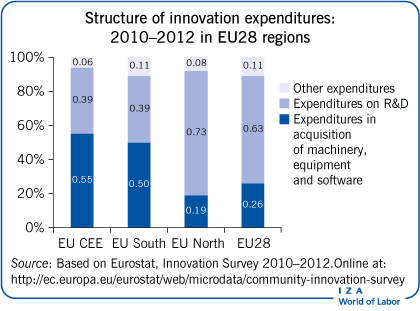Elevator pitch
The future growth of Central and Eastern Europe (CEE) depends on upgrading technology, exporting and coupling domestic technology efforts while improving their position in global value chains. Current policies in the region are not geared to these tasks, despite the availability of huge financial opportunities in the form of EU structural funds. Existing policies are overly focused on research and development (R&D) and neglect sources of productivity growth, such as management practices, skills, quality, and engineering. The challenge is how to design industrial and innovation policies so that they promote modernization and drive structural change.

Key findings
Pros
Coupling domestic technology efforts with the import of new equipment and management practices could help promote technology upgrading in CEE.
Production capability and engineering, in addition to research, are important antecedents to development and innovation in CEE.
Production capability is the most significant driver of productivity growth in CEE.
CEE economies are specialized in the low value-added segments of the global production chain and benefit from vertical specialization with EU North firms.
Cons
In CEE, technology transfer activities are important but neglected drivers of innovation along with non-R&D-based innovation activities.
Innovation policy in CEE is based solely on R&D, imitating best practices in northern Europe, instead of addressing regionally specific challenges.
CEE economies over-prioritize attracting foreign direct investment and do not place enough emphasis on the quality of subsidiary developments.